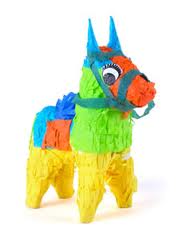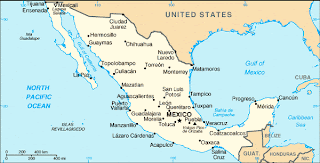Romanian Pottery
 I couldn't make our only craft for Romania be a vampire, after all that isn't even based on reality, so we did another fun craft this week - Romanian pottery. Pottery is a traditional art form in Romania. The most famous pottery comes from the village of Horezu. In this town you can stroll down Olari St. (Potters' Street) and see the different styles and variations of the many families who have been making this pottery for generations. The pottery is still shaped on old-fashioned kick wheels and are decorated with geometric, floral and animal patterns using 100% natural colors and tools such as goose feathers and cow horns. One of the most popular motifs on the pottery is known as the Horezu Rooster and it is one that we tried to emulate on our pottery - to varying success :)
I couldn't make our only craft for Romania be a vampire, after all that isn't even based on reality, so we did another fun craft this week - Romanian pottery. Pottery is a traditional art form in Romania. The most famous pottery comes from the village of Horezu. In this town you can stroll down Olari St. (Potters' Street) and see the different styles and variations of the many families who have been making this pottery for generations. The pottery is still shaped on old-fashioned kick wheels and are decorated with geometric, floral and animal patterns using 100% natural colors and tools such as goose feathers and cow horns. One of the most popular motifs on the pottery is known as the Horezu Rooster and it is one that we tried to emulate on our pottery - to varying success :)
Horezu Rooster Plate
For the project you will need:

- plate (we got a glass one from the dollar store)
- regular acrylic paints if painting on back side of glass plate only. If you have a regular paint - make sure your paints are food safe. Or maybe use sharpies?
- a drawing of the Horezu rooster or any other drawing for that matter. It's your plate - go nuts!
1. Clean plate and get any sticker residue off.
2. Tape picture on front of plate, face down so that when you turn it over you see the design.
3. Paint away. I helped my son with the rooster but he did a nice swirly design around the outside. My daughter did the whole thing- including drawing the rooster.
Above and right is the plate done by my daughter.
 <<This one was done by my son and I :)
<<This one was done by my son and I :)
Both plates are pictured sitting on top of our normal white dinner plates. I think they would make really cute additions to any china cabinet.
Now to learn a little Romanian.
Romanian is what they consider a "Romance Language", I'm not quite sure what that means and, frankly, I don't have time right now to find out because I'm super-behind in getting this post out. :) Anyway, some of the other "romance languages" are French, Italian, Spanish, and Portuguese. When you see some of the phrases in Romanian you will see some similarities to these languages. Originally descended from Latin, the language came to the area with the Romans, but over time was influenced by the Slavic languages. There are about 4 different dialects but the one spoken most often in Romania is "Daco-Romanian". Here are a few phrases to get you going-
Hello - salut How are you? - Ce mai faci? Thank you - mersi
You're welcome- su placere I love you - te iubesc
and because I love YOU I am giving you a bonus phrase!!
Vehicolul meu pe perna de aer e plin cu tipari.
Which means My Hovercraft is full of eels. You never know when that might come in handy huh? Have a great weekend and may your hovercraft never be full of eels :)


















































